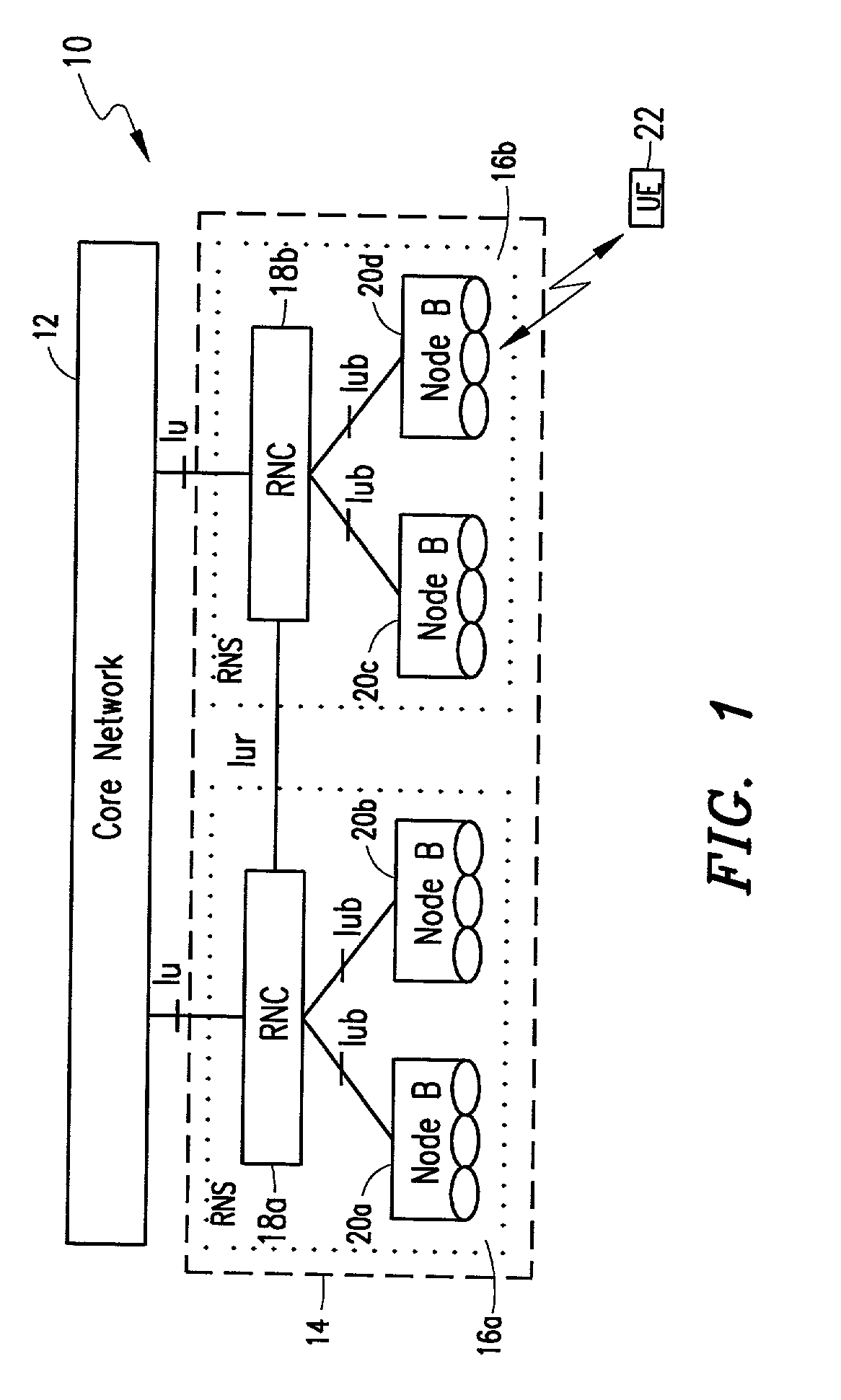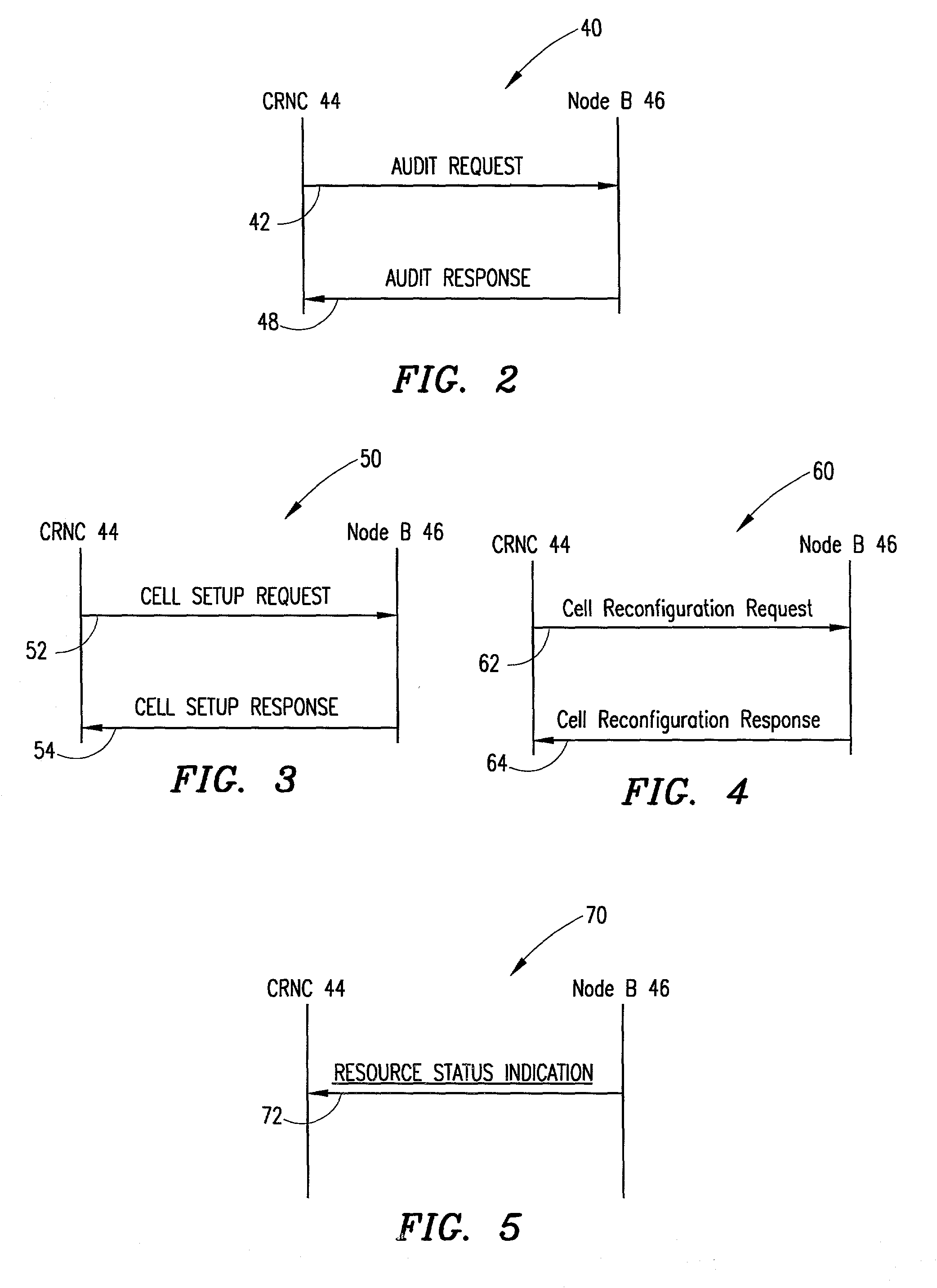Distributed admission control
a technology of distributed admission and control, applied in the field of telecommunications, can solve the problems of admission control function that will not work, admission control errors, and significant negative impact on the quality of existing connections
- Summary
- Abstract
- Description
- Claims
- Application Information
AI Technical Summary
Benefits of technology
Problems solved by technology
Method used
Image
Examples
Embodiment Construction
[0022] FIG. 1 is a block diagram of an exemplary mobile communications network; and, in particular, an exemplary 3.sup.rd generation mobile communications network that can be used to implement embodiments of the present invention. More particularly, FIG. 1 illustrates a Universal Mobile Telephony System (UMTS), generally designated by reference number 10, which is configured in accordance with the 3.sup.rd Generation Partnership Project (3GPP) technical specifications.
[0023] UMTS 10 includes a Core Network 12, and a Universal Terrestrial Radio Access Network (UTRAN) 14. UTRAN 14 includes one or more Radio Network Subsystems (RNSs), such as RNSs 16a and 16b. The RNSs 16a and 16b each include an RNC (Radio Network Controller) 18a and 18b, respectively, and related Node Bs 20a, 20b and 20c, 20d, respectively.
[0024] The Core Network 12 enables subscribers to access services from a network operator. An RNS can function in a UTRAN as, for example, the access part of the UMTS network; and ...
PUM
 Login to View More
Login to View More Abstract
Description
Claims
Application Information
 Login to View More
Login to View More - R&D
- Intellectual Property
- Life Sciences
- Materials
- Tech Scout
- Unparalleled Data Quality
- Higher Quality Content
- 60% Fewer Hallucinations
Browse by: Latest US Patents, China's latest patents, Technical Efficacy Thesaurus, Application Domain, Technology Topic, Popular Technical Reports.
© 2025 PatSnap. All rights reserved.Legal|Privacy policy|Modern Slavery Act Transparency Statement|Sitemap|About US| Contact US: help@patsnap.com



